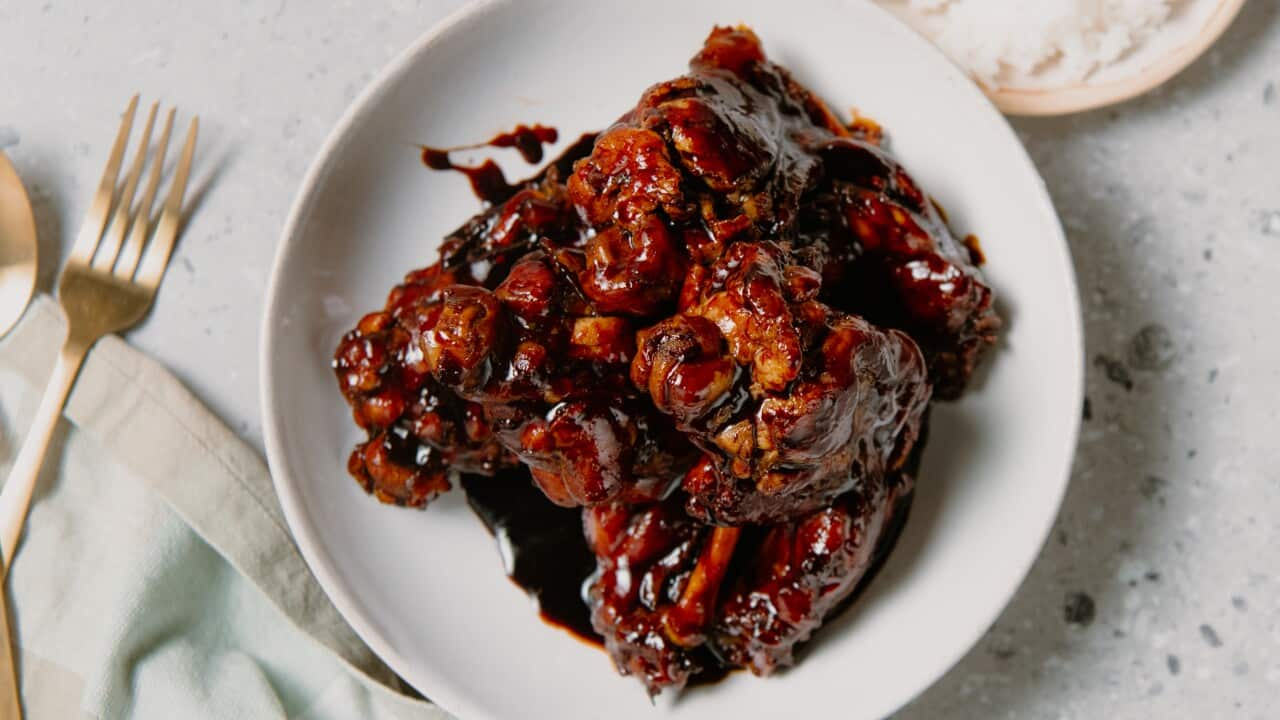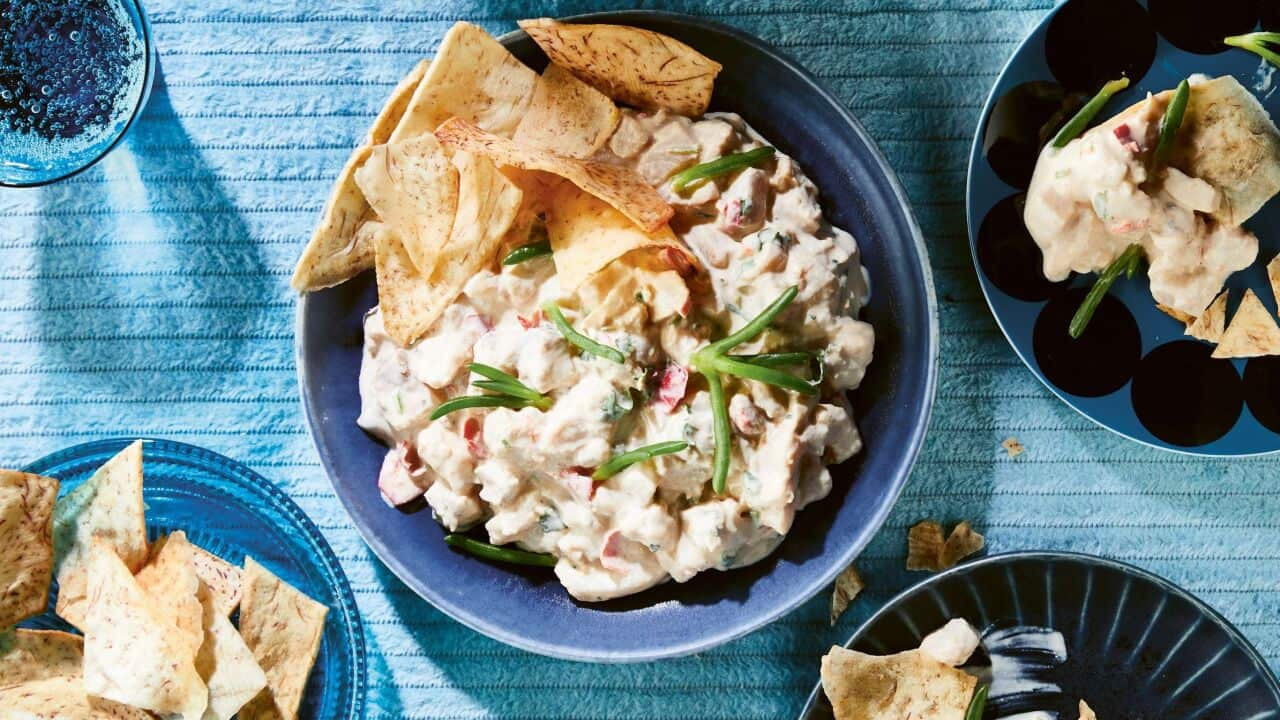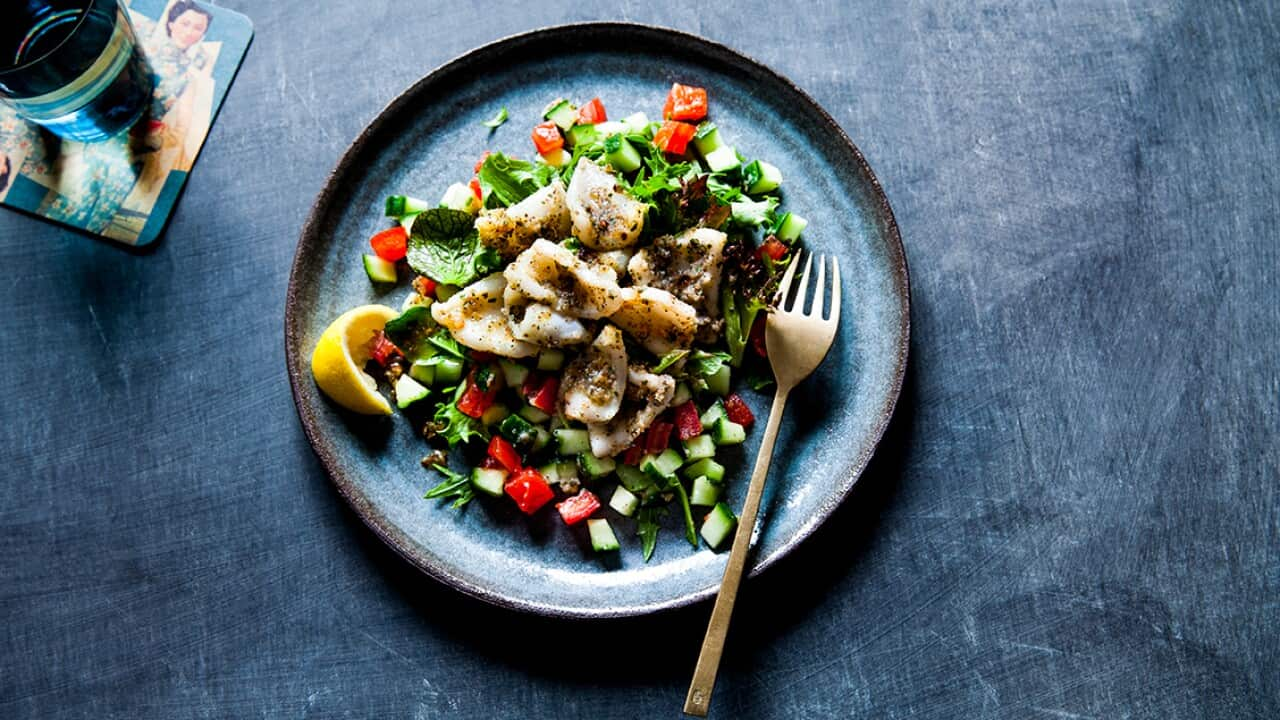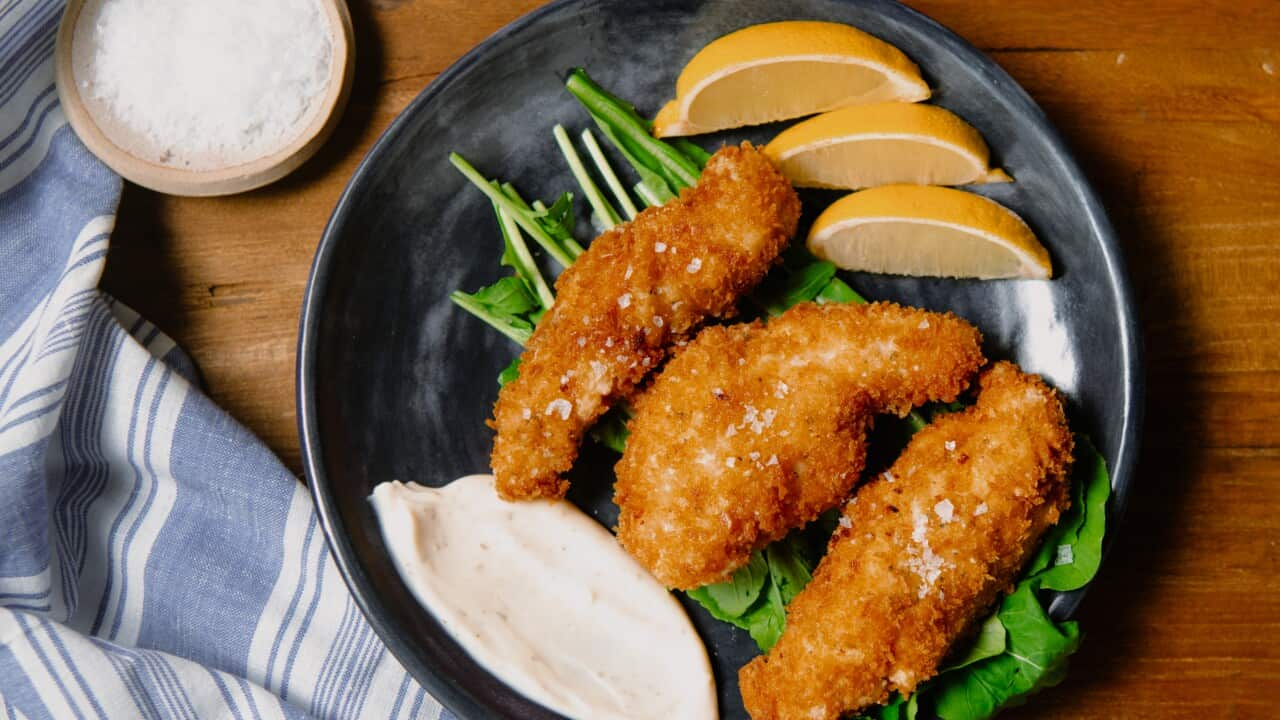Stream free On Demand

Soulful Food
episode • The Cook Up with Adam Liaw • cooking • 24m
G
episode • The Cook Up with Adam Liaw • cooking • 24m
G
Every time Indigenous chef makes crocodile laksa, a dish that he’s known for across WA and the NT, he remembers his boys.
“Sadly, they passed away sadly at birth,” recalls , co-founder and culinary lead of . I’ve always had a connection to my sons and that’s by being able to do crocodile.”
Green explains that crocodile is important to our First Nations people for a diverse range of reasons. The Victorian-born chef tells SBS that even though he didn’t grow up with crocodile, he became familiar with it during adulthood.
I will always do crocodile, to educate customers about what it is and the stories behind it.
Green was adopted into Yolngu Culture in North East Arnhem land during a previous relationship because of his sons. “Their mother was Yolngu. Crocodile is a totem in Yolngu culture. The story of Baru [or crocodile] is a massive story within the Yolngu Culture because it's one of the creation stories.”

Crocodile laksa by chef Zach Green. Credit: North West Brewery
“I will always do crocodile, to educate customers about what it is and the stories behind it. Crocodile laksa will never leave my menu.”
To make crocodile laksa, Green mixes curry powder, paprika, chilli, onion, garlic, stock, coconut cream and coconut milk. “I cook the crocodile tail meat in the sauce for about 12 hours, so it slowly cooks and falls away when you eat it. When it’s done, I put the noodles on top of the sauce and pieces of meat in a bowl, and Bob’s your uncle.
“People love the flavours and simplicity of the dish. I feel proud knowing that my customers are eating something that’s so significant to me as an Aboriginal man, and I want them to know more about the story behind it.”
Crocodile laksa will never leave my menu.
There’s another purpose to encouraging people to eat crocodile, Green says. “Indigenous ingredients should always tell a story about Indigenous culture. Then it provides people with education. That’s pretty much reconciliation on a plate.
"When you eat Indigenous ingredients, there's 60,000 years worth of stories on your plate. I want people to embrace that.”
Crocodile has been eaten for quite some time
Head chef and business owner of , , is also on a mission to get more people eating crocodile.
Originally from Mer Island in the Torres Strait, Bero was raised to eat crocodile as a staple protein. “Crocodile has been around forever, so people have been eating crocodile forever,” Bero tells SBS. “Growing up, crocodile was just another food source, and it was always part of our diet. Every part of the animal was used and nothing was ever wasted.”
READ MORE

Sticky crocodile shanks
Today, Bero encourages people of all cultures across the nation to cook with croc.
“Crocodiles don't really have a predator, except for us humans. So there are a lot of them and they can be farmed as well."
Although some restaurants are using crocodile meat in their dishes, a lot of gets used to make pet food. "I believe that crocodile meat is a source of protein that could be used to really sustain us – just as long as we explore the whole animal, not just the tail. The more we understand each of the bits of the crocodile, the more we can use it to create many different dishes.”
Croc cooking tips
So how do we cook crocodile meat and use it in our home-based dishes?
Firstly, we have to source it. Bero says croc meat is increasingly appearing on supermarket shelves and at select butchers. If you can't find it at your local, start asking for it to be supplied.
Once you’ve got a piece of croc meat, it’s time to cook it.
“Crocodile meat is in-between turkey meat and fish [flesh]. When you cook with crocodile, you have to think about the different parts of the animal and how they can provide different textures and flavours. That will also influence the way you cook it."
Crocodile meat also “sucks up flavours just like turkey meat does” so use this point to your advantage and play around with marinades.
“You can make sticky crocodile legs with five-spice mix, just like you do with chicken legs. Or, you can slow cook the shanks just like you would cook lamb shanks. The meat will just fall off the bone.”
If you’ve never cooked with crocodile before, why not try something different and just give it a go?
If you’ve never cooked with crocodile before, Bero advises croc novices to start with the tail. Just be aware that there are other parts of the animal that you can cook beautifully when you gain more confidence.
To cook the tail in an approachable way, treat it as you would calamari or squid and opt for the quick dish, speedy salt and pepper crocodile.
“All you have to do is thinly slice a few pieces of crocodile tail. Then, dust them with salt and pepper and fry the meat.
“If you’ve never cooked with crocodile before, salt and pepper crocodile is an achievable dish. Why not try something different and just give it a go? You may or may not like it, but at least you've given it a try.”
More Indigenous food inspiration

Finger limes taste sensational, but what makes them good for you?










